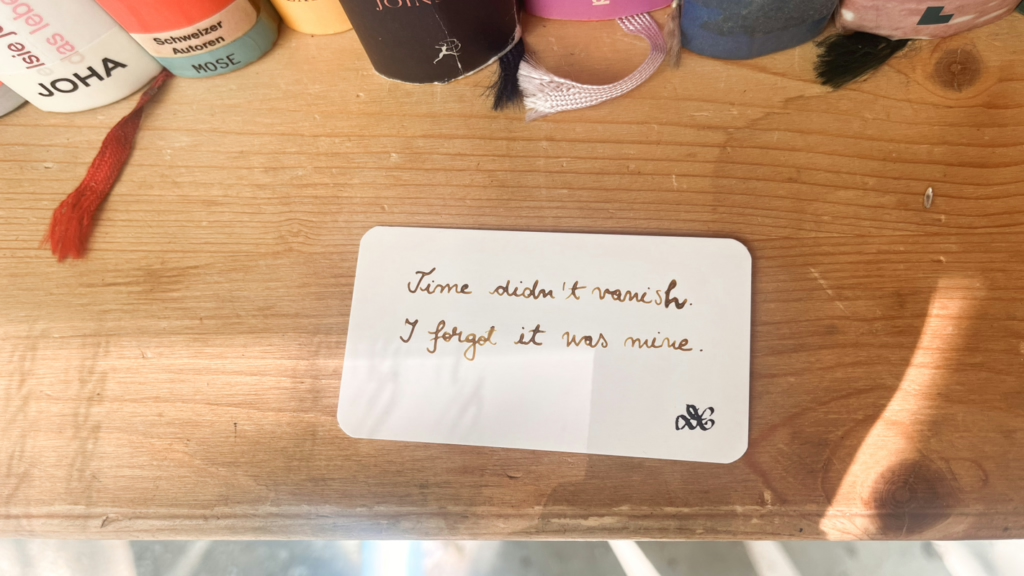Lore Fragment
Swiss German isn’t one language—it’s a constellation of dialects. This poetic reflection explores how living tongues resist grammar and thrive in motion.
One spelling to rule them all,
One grammar to find them,
One standard to tame them all,
And in the structure bind them.
There’s something strange about living in a place where the language changes from one valley to the next.
Where there’s no single right spelling;
Where the written form is a suggestion, not a rule;
Where dialect lives in mouths, not books.
Most people think grammar comes first.
That it births language. Shapes it. Contains it.
But that’s a comforting illusion.
Language is older. Wilder.
It grows like a vine — twisting, adapting, spilling over the scaffolding we try to build around it.
Grammar is just what we say about the vine after it’s already climbed the wall.
I used to teach English.
My students were concerned with grammar rules — as if speaking well required permission.
They were surprised when I told them: grammar doesn’t own language.
It follows it.
That’s why Swiss German fascinates me.
It refuses containment.
It’s not a single language, really — more like a constellation of dialects.
No one tries to standardize it. No one could.
It just… lives. In kitchens. Train stations. Side streets.
It changes, evolves, shrugs off structure like an old coat.
A standardized language is beautiful.
But it’s also a containment spell.
Swiss German never agreed to be contained.
Maybe not everything needs to be tamed to be understood;
Maybe not everything needs a capital letter to be worthy;
Maybe some languages are meant to live in motion — wild, warm, and beloved.

P.S. If this post about Swiss German dialects resonates, feel free to pass it along. Forwards often reach exactly who needs them most—and that’s something I am deeply grateful for.

